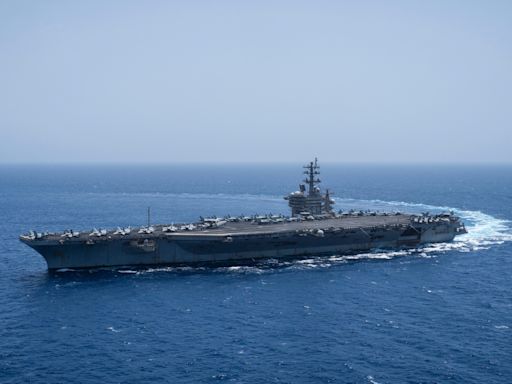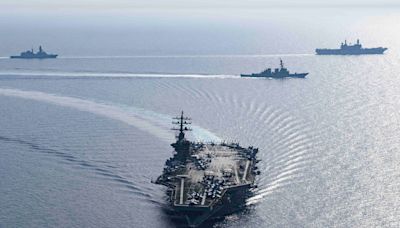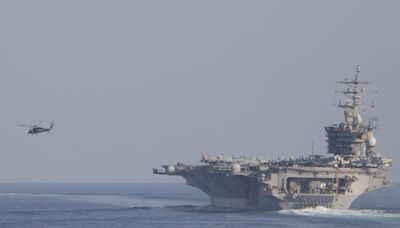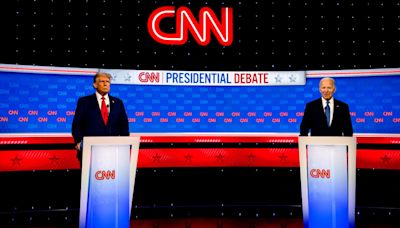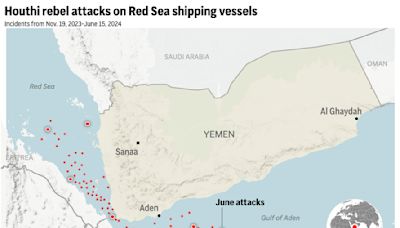Search results
Dwight David Eisenhower ( / ˈaɪzənhaʊ.ər / EYE-zən-how-ər; born David Dwight Eisenhower; October 14, 1890 – March 28, 1969), nicknamed Ike, was an American military officer and statesman who served as the 34th president of the United States from 1953 to 1961.
- Eisenhower’s Early Life and Military Career
- Eisenhower in World War II
- Ike’s Road to The White House
- Eisenhower’s Domestic Policy
- Eisenhower’s Foreign Policy
- Dwight D. Eisenhower: Legacy and Post-Presidential Life
- GeneratedCaptionsTabForHeroSec
Born in Denison, Texas, on October 14, 1890, Dwight David Eisenhower grew up in Abilene, Kansas, as the third of seven sons in a poor family. To the distress of his mother, a devout Mennonite and pacifist, young Ike (as he was known) won an appointment to the U.S. Military Academy at West Point, New York, and graduated in the middle of his class in...
Eisenhower returned soon after Nazi Germany’s invasion of Poland sparked the outbreak of World War II in Europe. In September 1941, he received his first general’s star with a promotion to brigadier general. After Japan attacked Pearl Harbor that December, U.S. Army Chief of Staff General George C. Marshall called Eisenhower to Washington, D.C. to ...
In 1948, Eisenhower left active duty and became president of New York City’s Columbia University. His brief return to civilian life ended in 1950, however, when President Harry S. Truman asked him to take command of the new North Atlantic Treaty Organization (NATO) forces in Europe. In that position, Eisenhower worked to create a unified military o...
As a moderate Republican, Eisenhower was able to achieve numerous legislative victories despite a Democratic majority in Congress during six of his eight years in office. In addition to continuing most of the New Dealand Fair Deal programs of his predecessors (Franklin Roosevelt and Truman, respectively), he strengthened the Social Security program...
Soon after taking office, Eisenhower signed an armistice ending the Korean War. Aside from sending combat troops into Lebanon in 1958, he would send no other armed forces into active duty throughout his presidency, though he did not hesitate to authorize defense spending. He also authorized the Central Intelligence Agency (CIA) to undertake covert ...
Though U.S.-Soviet relations remained relatively cordial throughout his presidency, including a summit meeting with Premier Nikita Krushchev in 1959, the Soviet shooting of a U.S. U-2 reconnaissance plane in May 1960 dashed Eisenhower’s hopes for a treaty before he left office. In his farewell address of January 1961, Eisenhower spoke of the danger...
Learn about the life and achievements of Dwight D. Eisenhower, the 34th president of the United States and a World War II hero. Explore his military career, his Cold War policies, his domestic reforms and his civil rights record.
- 4 min
1 day ago · Dwight D. Eisenhower (born October 14, 1890, Denison, Texas, U.S.—died March 28, 1969, Washington, D.C.) was the 34th president of the United States (1953–61), who had been supreme commander of the Allied forces in western Europe during World War II.
- Birthplace of U.S. President Dwight D. Eisenhower, Denison, Texas.
- Dwight D. Eisenhower as a young boy.
- Wedding portrait of Dwight D. Eisenhower and Mamie Eisenhower, 1916.
- General Dwight D. Eisenhower talking to paratroopers of the U.S. 101st Airborne Division just before their departure for Normandy, June 5, 1944. The trooper's “Screaming Eagle” shoulder patch was scratched from this wartime photo for security reasons.
- U.S. President Harry S. Truman awarding General Dwight D. Eisenhower his fifth Distinguished Service Medal as Mamie Eisenhower looks on.
- General Dwight D. Eisenhower, Field Marshal Bernard Montgomery, and General Omar Bradley at the National Airport, Washington, D.C., September 12, 1946.
- Gen. Dwight D. Eisenhower visiting Omaha Beach, Normandy, June 1951.
- Dwight D. Eisenhower campaign pin, 1952.
Apr 3, 2014 · Dwight D. Eisenhower, 34th president of the United States, promoted Atoms for Peace at the United Nations General Assembly in order to ease Cold War tensions.
Dwight D. Eisenhower's tenure as the 34th president of the United States began with his first inauguration on January 20, 1953, and ended on January 20, 1961. Eisenhower, a Republican from Kansas, took office following his landslide victory over Democratic nominee Adlai Stevenson in the 1952 presidential election.
Bringing to the Presidency his prestige as commanding general of the victorious forces in Europe during World War II, Dwight D. Eisenhower obtained a truce in Korea and worked incessantly during...
Learn about the life and achievements of Dwight D. Eisenhower, one of America's greatest military commanders and the thirty-fourth President of the United States. Explore his campaigns, domestic and foreign affairs, family, and legacy.
